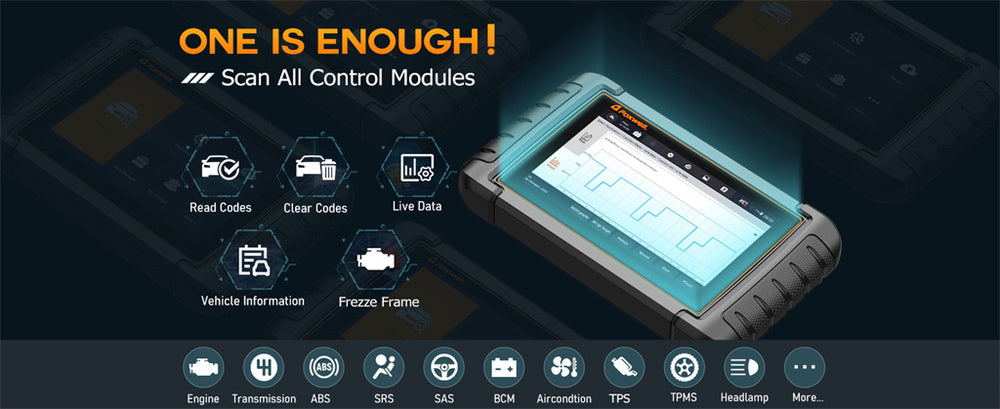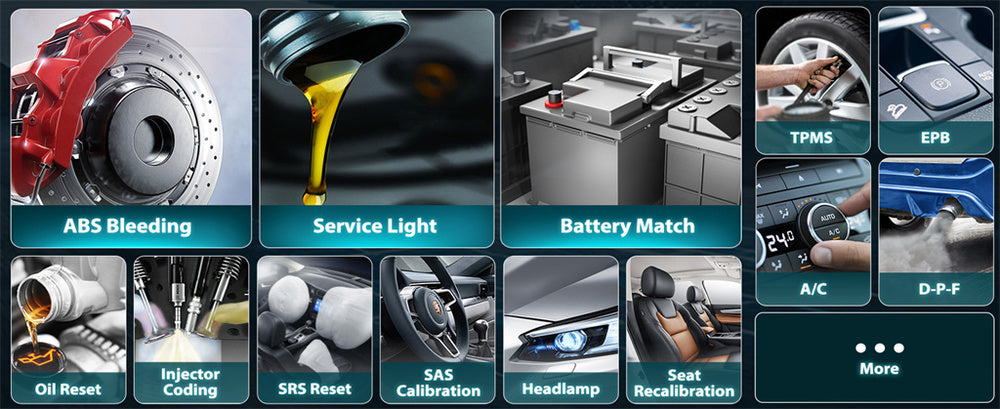When diagnosing car problems, many car owners and mechanics turn to OBD2 scanners. These devices read diagnostic trouble codes (DTCs) generated by your car's computer - including diagnostic trouble codes about interior water damage - but OBD2 scanners cannot detect interior water intrusion due to being designed only to measure engine and system performance and not physical conditions like water intrusion.
We'll explain why OBD2 scanners cannot detect water intrusion while providing alternative detection methods, how water intrusion affects cars, and provide tips on prevention measures to take.
What Impact Water Damage Has on Cars

Water damage inside a car can cause numerous issues, from cosmetic issues like mold and mildew growth to electrical failures. Signs of interior water damage include musty odor, damp or wet carpets, stains, and corrosion—signs that this problem needs attention immediately; otherwise, irreparable repairs could occur at considerable repair costs.
Common Misconceptions About OBD Scanners
Unfortunately, car owners often have unrealistic expectations regarding OBD scanners, leading to false hope in diagnosing and maintaining their vehicles correctly. Understanding their capabilities and limitations is vitally important.
One of the more frequent misperceptions about OBD scanners is that they can identify all possible car issues. While these devices can indeed be highly beneficial, their primary use lies in reading diagnostic trouble codes (DTCs) related to engine, transmission, and emissions systems; any issues outside these three components, such as interior water damage, do not generate DTCs and cannot therefore be detected using OBD scanning technology.
OBD Scanners Do Not Give an Accurate Picture of Car Health
Many drivers believe OBD scanners provide a complete overview of a vehicle's health. However, this belief is false. OBD scanners rely solely on data supplied by the vehicle's onboard computer and only alert of problems related to sensors, actuators, and other electronic components. They do not evaluate physical conditions like rust, structural damage, and water intrusion, as these will go undetected by OBD scanners.
Not All OBD Scanners Have Equal Capabilities
Not all OBD scanners provide equal diagnostic capability. Basic models may only read and clear generic codes, while more advanced scanners can access manufacturer-specific codes to gain in-depth information on your vehicle. In some instances, high-end scanners can perform active tests and deliver live data, though these cannot detect physical damage like water intrusion.
Some car owners mistakenly believe that OBD scanners can be an adequate substitute for professional inspections. Though OBD scanners can provide initial diagnostics and routine checks, they should never be seen as a replacement for having your vehicle thoroughly inspected by a qualified mechanic who can detect issues like water damage, wear-and-tear wear, or any physical problems which OBD scanners cannot identify or diagnose.
OBD Scanners Can Automatically Solve Problems
There is a common misperception that OBD scanners automatically solve problems. In reality, these devices only read and clear codes; they cannot repair issues themselves. When an OBD scanner detects an issue, it provides information about what might be amiss.
Still, ultimately, it remains up to either you or a mechanic to address and solve it themselves - for instance, if water damage affects the electrical components of your car, its scanner might alert you but cannot pinpoint or fix its cause - for example, it cannot fix water damage itself!
Alternative Methods for Determining Water Damage
Various alternative methods must be utilized to detect water damage in your car. A visual inspection can help - look out for wet spots, stains, and corrosion on interior surfaces or under carpets as indicators of water intrusion. A moisture meter may also help detect hidden moisture that might not be readily noticeable by measuring its content across materials - measuring where water might have seeped in can provide further clues.
Opting for professional inspection services may also be worthwhile. Qualified mechanics or experts in water damage can inspect your car's interior for areas affected by moisture and detect and assess its extent effectively.
Preventing Water Damage
Avoiding water damage to your car's interior is vital to maintaining its condition and integrity. Regular inspections can help identify and address potential moisture entry points before they become significant issues. Below are a few comprehensive steps you can take to help mitigate or avoid it:
Weather Stripping Maintenance
Your car's doors and windows are protected by weather stripping, which serves as the first line of defense against water intrusion. However, over time, the seals may wear down or form cracks. Regularly inspect these seals for signs of wear or damage and replace any needed to ensure a tight seal against moisture intrusion. Pay particular attention to areas like the sunroof, windows, and trunk, where seals tend to deteriorate more rapidly.
Check and Clear Drain Holes
Cars feature drain holes at various points on their bodies—doors, sunroof, and around the windshield—to let water escape. However, if these drain holes become blocked with debris, they can collect excess liquid that seeps into the interior, eventually leading to flooding issues. It is essential to regularly check and clear these drain holes to ensure they're functioning as intended and clear any blockages with thin, flexible wire or similar to provide a free water flow from all sources.
Always Close Windows and Sunroof
When leaving your car unattended, always ensure your windows and sunroof are fully closed, particularly before rain or washing it. Even small gaps allow water to get inside and cause considerable damage over time. Furthermore, regularly check the seals around your sunroof for signs of wear or damage and replace them if necessary.
Use waterproof floor mats and seat covers for additional water damage protection. They help contain spills while keeping them out of carpets and upholstery, keeping water at bay from seeping into them and becoming permanent damage. When purchasing such accessories, look for high-quality waterproof materials that can easily be maintained. In case of leakage, they will minimize damages and make cleanup simpler.
Regularly Inspect the Roof and Body
Be vigilant and check your car's roof and body regularly for signs of damage, such as dents, scratches, or rust, that could allow water to seep into its interior and penetrate further. Seal or repair any damages to stop further penetration of its interior by water. Pay particular attention to areas where panels meet, like windshields, doors, and trunks, where this could happen more often than in other places.
Maintain a Clean Car
Regular car washings can help eliminate debris build-up that clogs drain holes and seals. Cleaning the interior regularly to remove moisture can prevent mold and mildew growth in carpets and upholstery. Using gentle cleaners on surfaces and vacuuming can quickly remove dirt and moisture from these materials. Afterward, allow enough time for airing out before driving again so all moisture evaporates completely.
Park Your Car in Sheltered Areas
When possible, park your vehicle in a garage or shelter during inclement weather to reduce the risk of water intrusion. If no garage or shelter is available, consider using an excellent-quality car cover as an additional form of protection against the elements.
Monitor for Signs of Leaks
Always remain wary of signs of water leakage, including damp carpets, musty odors, or water stains on vehicle surfaces. If any such signs occur, immediately investigate and address their source to prevent further damage to the car's components and structures. Regularly check under seats, trunk, or spare tire well for moisture or standing water accumulations to detect possible sources.
Apply Waterproofing Treatments
Consider adding waterproofing treatments, such as wax or waterproofing spray, to your car's exterior to create a protective barrier and repel water. This will help prevent water damage and reduce risks like corrosion and rusting. Regularly applying high-quality waxes or sealants will protect paintwork against rusting and corrosion damage, providing another measure to combat this potential hazard.
Schedule Regular Maintenance Checks
It is wise to schedule routine maintenance checks with a reliable mechanic to ensure all seals, gaskets, and potential water entry points remain in good condition. Expert mechanics possess the tools and expertise required to identify issues that may take time to be apparent to car owners; regular maintenance checks help identify minor problems before they become serious.

Conclusion
While OBD scanners are valuable tools for diagnosing car issues, they cannot identify interior water damage. Visual inspections, moisture meters, and professional services must be utilized to address water damage and detect moisture intrusion into your car's interior adequately. By taking proactive steps against water intrusion and regularly checking its interior for damage prevention measures, you can prevent costly and damaging water damage to your car's interior.
FAQs
Can an OBD scanner detect interior water damage in my car?
No, an OBD scanner cannot detect interior water damage. OBD scanners are designed to read diagnostic trouble codes related to the engine, transmission, and emissions systems, not physical conditions like water intrusion.
What are the signs of interior water damage in a car?
Signs of interior water damage include a musty odor, damp or wet carpets, stains, and corrosion. Electrical issues, such as malfunctioning wiring or sensors, may also indicate water damage.
How can I prevent water damage in my car?
To prevent water damage, regularly inspect and maintain weather stripping, check and clear drain holes, ensure windows and the sunroof are closed, use protective mats and covers, and park in sheltered areas. Additionally, keep your car clean and apply waterproofing treatments to the exterior.




Leave a comment
This site is protected by hCaptcha and the hCaptcha Privacy Policy and Terms of Service apply.